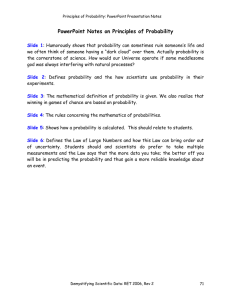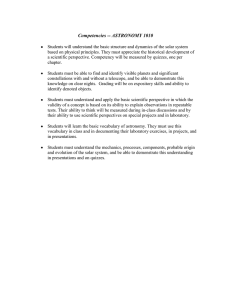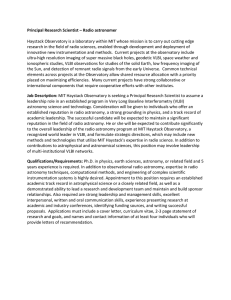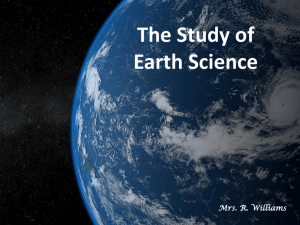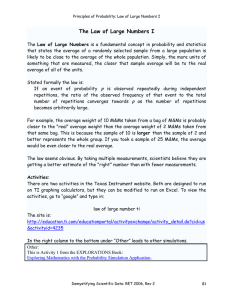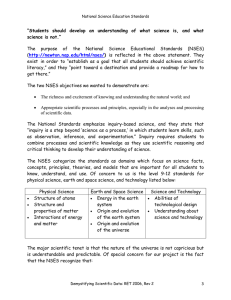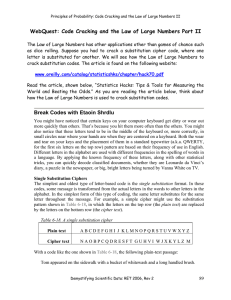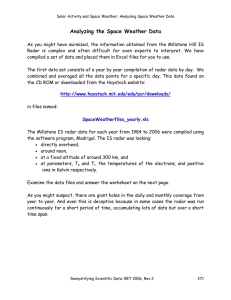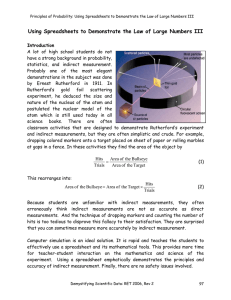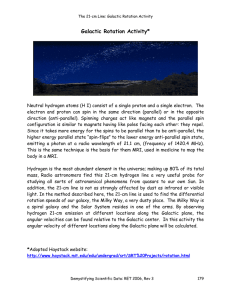Introduction: During the summer of 2006 Esther Santos and Peter Nassiff,... (NH) South High School and Burlington (MA) High School respectively,
advertisement
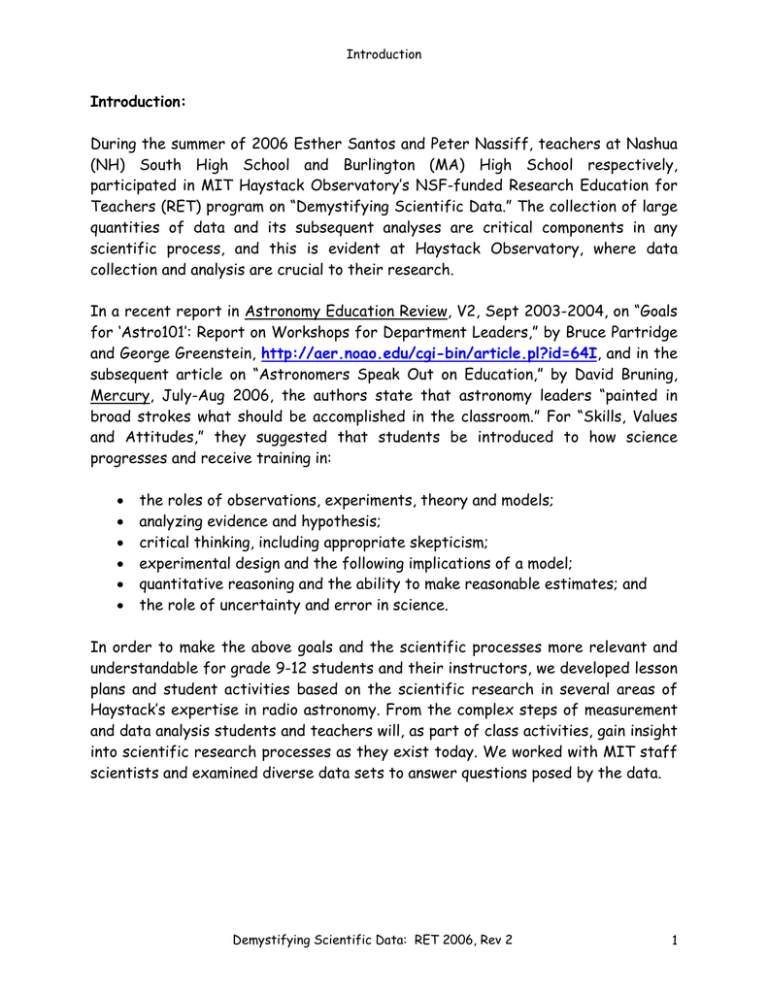
Introduction Introduction: During the summer of 2006 Esther Santos and Peter Nassiff, teachers at Nashua (NH) South High School and Burlington (MA) High School respectively, participated in MIT Haystack Observatory’s NSF-funded Research Education for Teachers (RET) program on “Demystifying Scientific Data.” The collection of large quantities of data and its subsequent analyses are critical components in any scientific process, and this is evident at Haystack Observatory, where data collection and analysis are crucial to their research. In a recent report in Astronomy Education Review, V2, Sept 2003-2004, on “Goals for ‘Astro101’: Report on Workshops for Department Leaders,” by Bruce Partridge and George Greenstein, http://aer.noao.edu/cgi-bin/article.pl?id=64I, and in the subsequent article on “Astronomers Speak Out on Education,” by David Bruning, Mercury, July-Aug 2006, the authors state that astronomy leaders “painted in broad strokes what should be accomplished in the classroom.” For “Skills, Values and Attitudes,” they suggested that students be introduced to how science progresses and receive training in: • • • • • • the roles of observations, experiments, theory and models; analyzing evidence and hypothesis; critical thinking, including appropriate skepticism; experimental design and the following implications of a model; quantitative reasoning and the ability to make reasonable estimates; and the role of uncertainty and error in science. In order to make the above goals and the scientific processes more relevant and understandable for grade 9-12 students and their instructors, we developed lesson plans and student activities based on the scientific research in several areas of Haystack’s expertise in radio astronomy. From the complex steps of measurement and data analysis students and teachers will, as part of class activities, gain insight into scientific research processes as they exist today. We worked with MIT staff scientists and examined diverse data sets to answer questions posed by the data. Demystifying Scientific Data: RET 2006, Rev 2 1 Introduction In particular: • • • • • Geodesy Using Very Long Baseline Interferometry (VBLI)—What are the limits and uncertainty of measurement of continental drift and how may they be resolved? Small Solar Radio Telescope (SRT) and Solar Storms—Did we just measure a violent solar activity or did the SRT “hiccup”? Galaxy Rotation and Motion—How can we measure the rotation of the Milky Way and when we do, what are the repercussions for our view of the Universe? Masers and Published Results—Science requires verifiable results; how do scientists present their data, results, and conclusions to others? Space Weather, even after decades of data collection of multiple, complex interacting variables—What can we do to make any sense of the complex interactions of the Sun and Earth? By examining these questions and the methods scientists use to answer them, students and teachers will gain from lesson plans and activities a deeper and broader understanding and appreciation of the scientific method and how scientists deal with the vagaries of data collection and analyses. And they will, in the process, actually be demystifying scientific data. Demystifying Scientific Data: RET 2006, Rev 2 2
